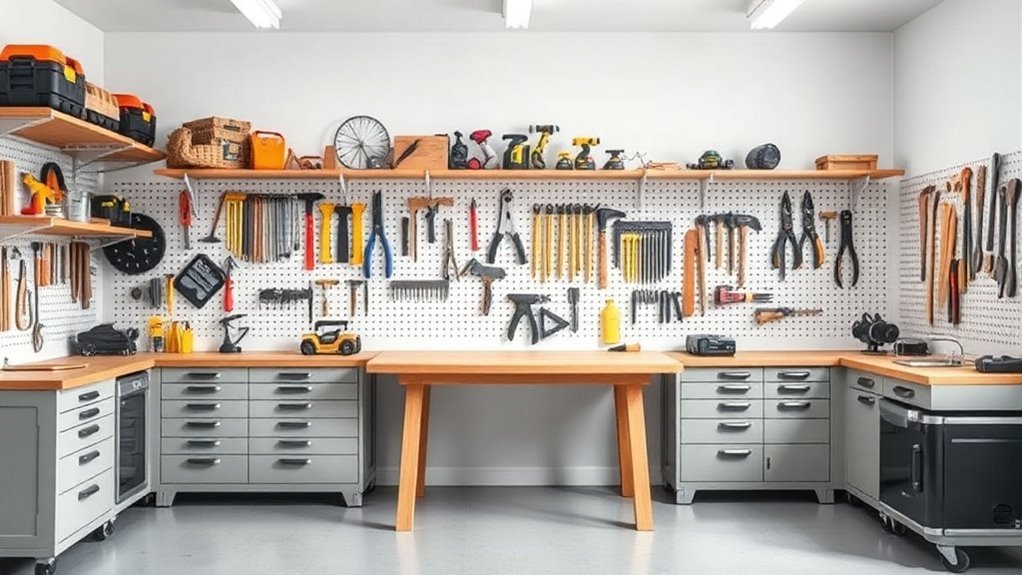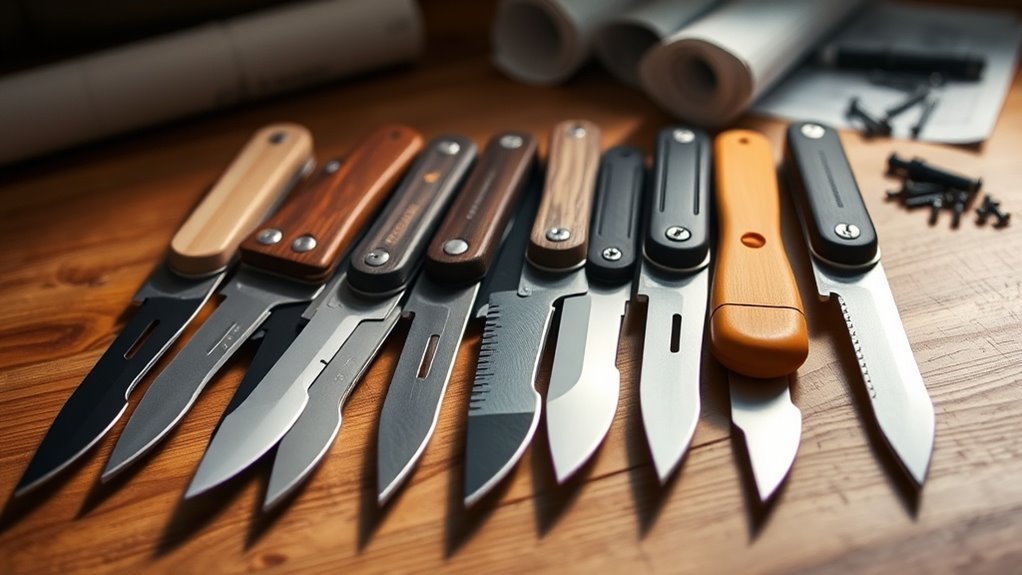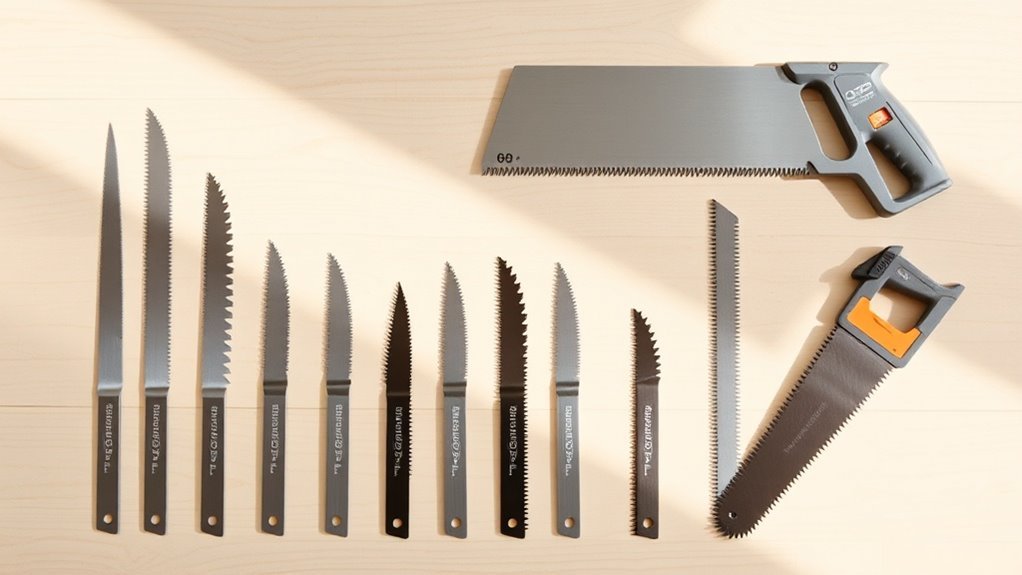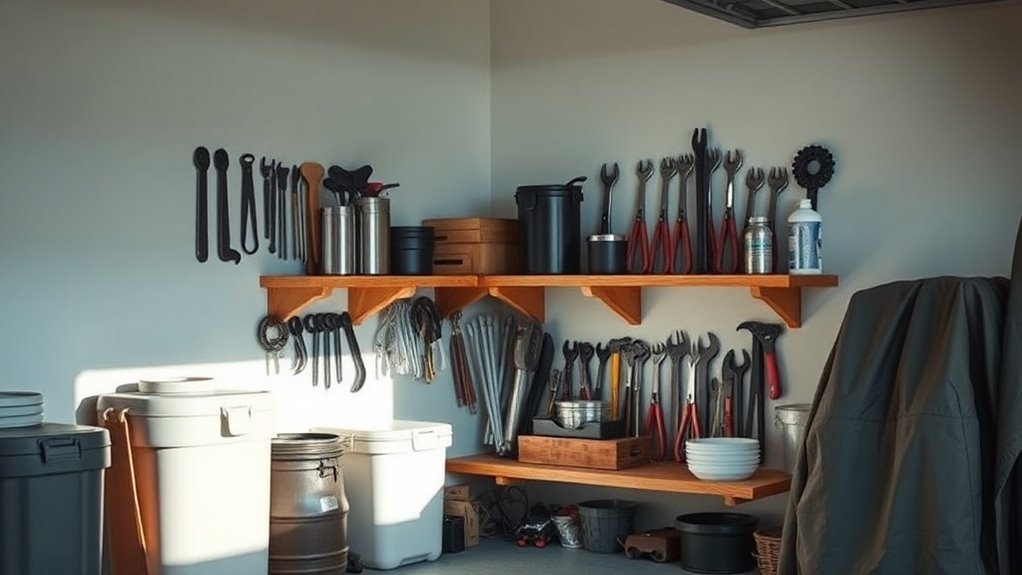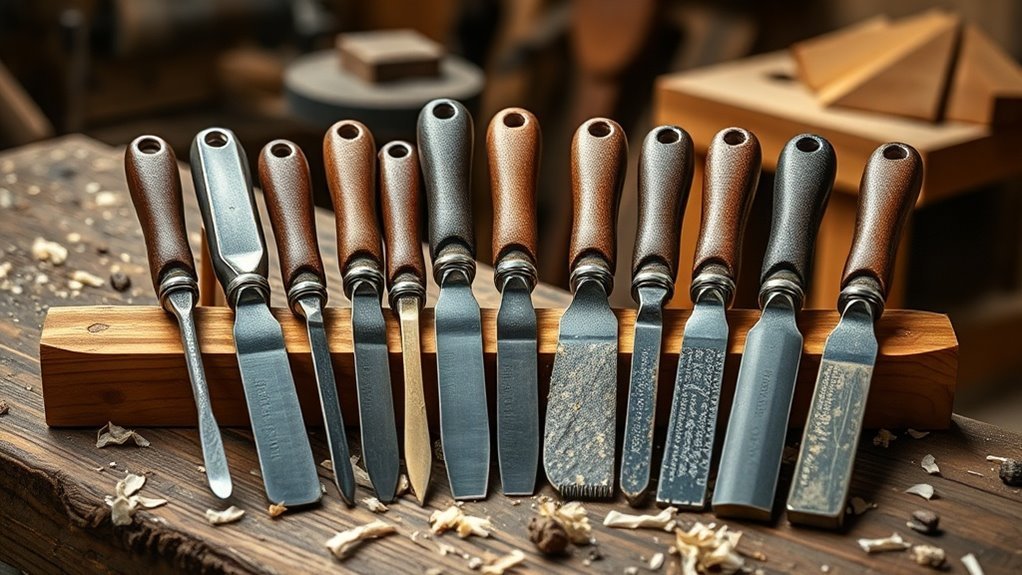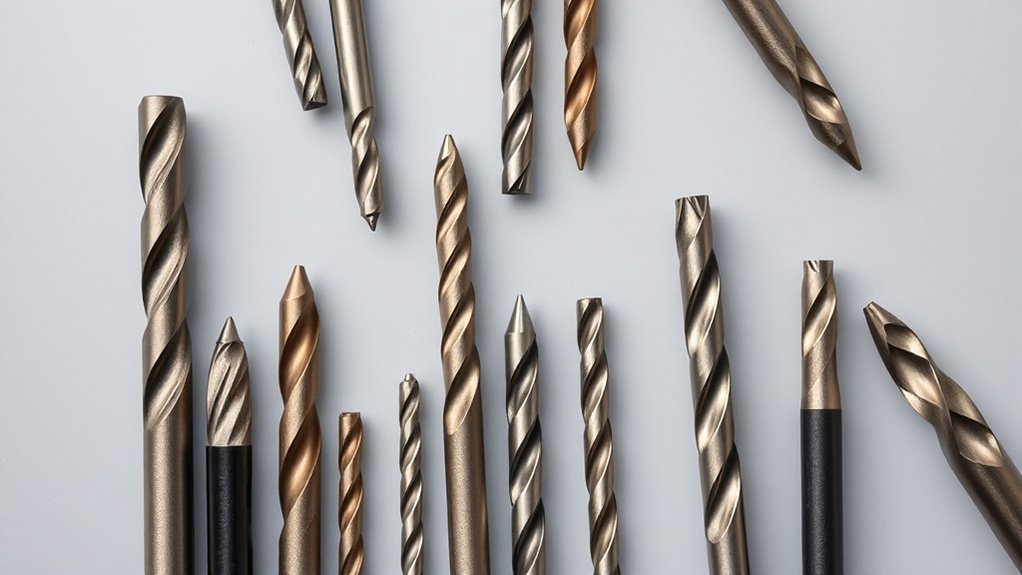Tool Bag Ergonomics: How Design Reduces Fatigue

Ergonomically designed tool bags help reduce fatigue by focusing on comfort and weight distribution. With padded straps and handles, they minimize strain on your shoulders and back. Organized compartments guarantee easy access to your tools, saving you time and energy. Balanced load distribution and soft grips reduce muscle fatigue during usage. When you choose the right ergonomic features, you enhance your overall productivity. Discover more about how to select the perfect ergonomic bag for your needs.
Key Takeaways
- Ergonomic tool bags feature weight distribution systems that minimize strain on shoulders and back during prolonged use.
- Padded straps and handles enhance comfort, reducing fatigue from carrying heavy loads.
- Organizational compartments keep tools within easy reach, optimizing workflow and limiting unnecessary movement.
- Adjustable strap features offer customizable fits, preventing muscle strain and ensuring balanced load distribution.
- Lightweight yet durable materials contribute to overall ease of handling, allowing for efficient tool transportation without excess fatigue.
The Importance of Ergonomics in Tool Bags
When you consider how often you rely on your tool bag, it’s vital to prioritize ergonomics. A well-designed tool bag can greatly reduce physical strain during daily tasks.
If you’re carrying heavy loads or reaching for tools frequently, an ergonomically designed bag helps distribute weight evenly. This means less pressure on your shoulders and back, leading to decreased fatigue.
Furthermore, a bag that allows for easy access to tools saves you time and energy, which is essential in a busy work environment. Investing in ergonomic features not only enhances comfort but also boosts productivity, as well-designed handles can significantly improve user control and ease of handling.
Key Features of an Ergonomic Tool Bag
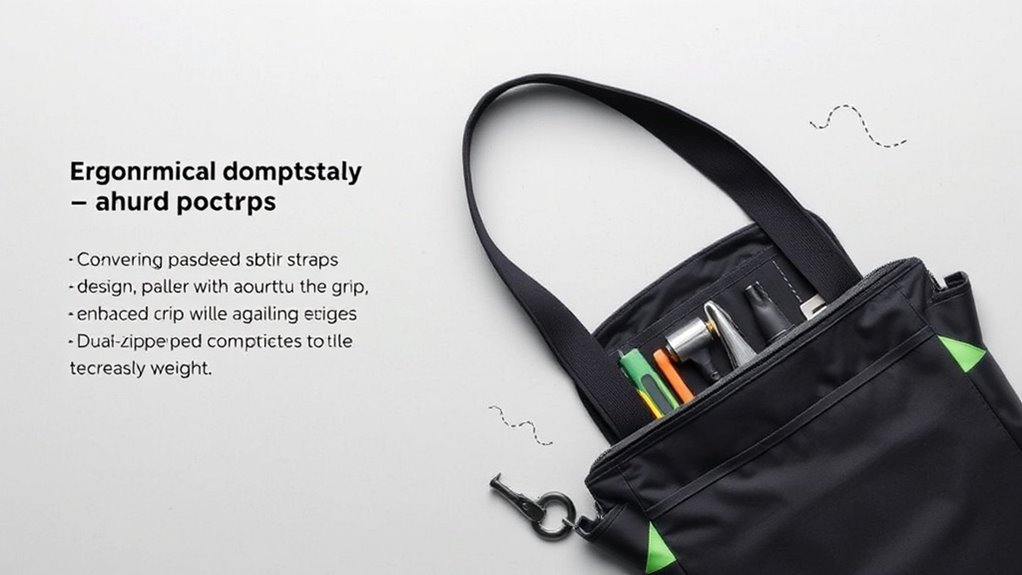
When choosing an ergonomic tool bag, you’ll want to focus on features that enhance comfort and usability.
Look for weight distribution systems that reduce strain, padded straps and handles for easy carrying, and organizational compartments that keep your tools accessible.
These elements can make a significant difference in your everyday tasks.
Weight Distribution Systems
One of the key features of an ergonomic tool bag is its weight distribution system, which guarantees that heavy tools are evenly spread across your body.
This design element reduces strain on specific muscles and joints, making your workday more comfortable and efficient.
- Balanced Load: The weight is distributed evenly, preventing shoulder and back issues.
- Adjustable Compartments: You can customize where to place tools based on your needs, enhancing stability.
- Center of Gravity: Keeps the bag close to your body, minimizing movement and fatigue.
- Material Choices: Lightweight yet durable materials help manage the overall weight without compromising strength.
Investing in a well-designed weight distribution system can greatly enhance your working experience.
Padded Straps and Handles
A well-structured weight distribution system sets the stage for the importance of padded straps and handles in an ergonomic tool bag.
These padded features are essential for minimizing strain on your shoulders and hands while you carry heavy loads. When you’re working on-site, you’ll appreciate how these straps and handles cushion the pressure, providing a more comfortable grip.
Look for adjustable straps that allow you to customize the fit, ensuring that the weight is evenly dispersed. This not only reduces fatigue but also helps prevent injury over time.
Whether you’re hauling tools across a job site or just lifting the bag into your car, padded straps and handles can make all the difference in maintaining your energy and focus during long workdays.
Organizational Compartments Design
While the comfort of padded straps and handles is essential, the organization of compartments in an ergonomic tool bag is equally important.
A well-designed tool bag helps you access your tools quickly, reducing stress and fatigue during your tasks.
Consider the following key features for ideal organization:
- Dedicated pockets for specific tools, minimizing the chance of damage and ensuring easy retrieval.
- Adjustable dividers that let you customize the layout based on your needs.
- Zippered sections to securely store smaller items, preventing them from getting lost.
- Color-coded compartments that enhance visibility and help you identify what you need at a glance.
Having the right organizational design makes your work more efficient, letting you focus on the task rather than searching for tools.
Weight Distribution: A Critical Factor
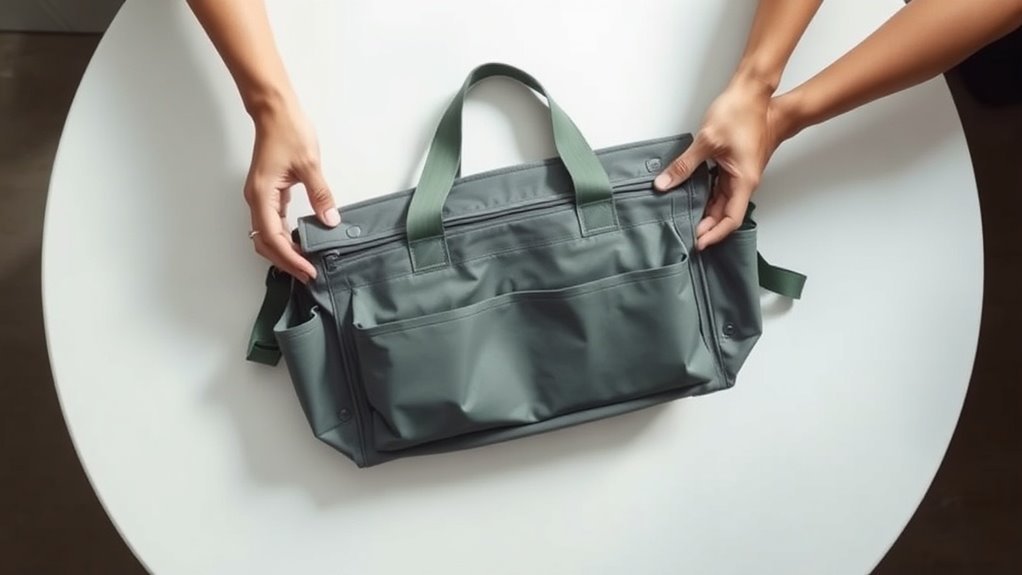
When you’re carrying a tool bag, balanced load distribution is key to reducing strain on your body. Adjustable strap features can help you achieve that ideal fit, making your experience more comfortable. Additionally, strategic tool placement can enhance ergonomics by allowing you to access tools without unnecessary bending or stretching. Let’s explore how these factors contribute to better ergonomics in your everyday tasks.
Balanced Load Distribution
Balanced load distribution is crucial for anyone who regularly uses a tool bag. When the weight is evenly spread, it reduces strain on your body, helping you work longer without fatigue. An imbalanced bag can lead to discomfort and potential injury.
Here are a few key benefits to take into account:
- Increased efficiency: You can move quickly and easily without wrestling with uneven weight.
- Enhanced comfort: A well-balanced tool bag sits better on your body, minimizing pressure points.
- Reduced injury risk: Proper weight distribution lowers the chances of muscle strain and fatigue.
- Improved focus: When you’re not distracted by discomfort, you can concentrate better on your tasks.
Investing in a tool bag that offers balanced load distribution can make a significant difference in your overall experience.
Adjustable Strap Features
How do adjustable strap features enhance weight distribution in tool bags?
These features allow you to customize the fit to your body, which considerably reduces the strain on your shoulders and back. By adjusting the length of the straps, you can achieve a balanced load, keeping the weight evenly distributed across your body. This helps prevent fatigue, especially during prolonged use.
Many bags also offer padded straps that provide cushioning, further minimizing discomfort. Additionally, adjustment points can accommodate various carrying positions, such as cross-body or over-the-shoulder, letting you choose what feels best for you.
With these adjustable features, you can effortlessly carry heavy tools, making your tasks more manageable and enjoyable without sacrificing comfort.
Handle Design and Grip for Comfort
Since a tool bag often accompanies you through various tasks, the design of its handle and grip plays an essential role in ensuring comfort during use.
The handle and grip design of a tool bag is crucial for comfort and ease during your tasks.
A well-designed handle can greatly reduce hand fatigue, making your work more enjoyable.
Look for features that enhance your grip and support:
- Ergonomic contours that fit your hand naturally.
- Soft materials that cushion pressure points and offer a secure grip.
- Textured surfaces that prevent slipping, even in wet conditions.
- Adjustable handles that cater to your preferred carrying style.
Additionally, employing ergonomic principles in tool bag design can lead to improved user comfort and efficiency.
Accessibility: Keeping Tools Within Reach
A comfortable grip is just the beginning when it comes to using a tool bag efficiently. Accessibility plays an essential role in reducing fatigue during your tasks.
You want your tools to be at your fingertips, not buried under other items. Organizing your bag with compartments guarantees you can quickly grab what you need, so you’re not wasting time searching.
Consider how often you use certain tools and place those in the most accessible spots. Look for tool bags with zippered pockets and pouches specifically designed for easy reach.
When tools are easy to access, you can maintain a steady workflow and avoid unnecessary bending or stretching, ultimately keeping fatigue at bay and boosting your overall performance. Moreover, using proper storage techniques for your tools helps in maintaining their condition and ensures safety while you work.
Enhancing Productivity Through Smart Design
Smart design can transform a tool bag into a productivity powerhouse. When your tools are organized, accessible, and tailored to your needs, you’ll find yourself working more efficiently.
Transform your tool bag with smart design for enhanced organization and efficiency in your work.
Here are some key features to contemplate for boosting your productivity:
- Compartmentalization: Keep your tools sorted, reducing time spent searching for what you need.
- Lightweight Materials: A lighter bag minimizes fatigue, allowing you to work longer without discomfort.
- Adjustable Straps: Customized fit guarantees better weight distribution, enhancing comfort as you move.
- Weather Resistance: Protects your tools from the elements, ensuring reliability and fewer interruptions.
With smart design, you’ll experience a noticeable improvement in your workflow, making each task faster and easier. Additionally, incorporating modular storage solutions can further optimize your workspace by promoting better organization and reducing clutter.
Questions
How Do I Choose the Right Size Tool Bag?
To choose the right size tool bag, consider the tools you’ll carry and their storage needs. Make sure it accommodates your essentials comfortably without being too bulky or heavy for your regular use.
Are There Tool Bags Specifically Designed for Left-Handed Users?
Yes, there are tool bags designed for left-handed users, featuring reversed pockets and adjusted functionalities. While right-handed options might dominate the market, these specially designed bags guarantee you’re not left out when organizing your tools.
Can I Customize an Ergonomic Tool Bag?
Yes, you can customize an ergonomic tool bag! Many manufacturers offer options to adjust size, compartments, and padding. Consider your specific needs to enhance comfort and efficiency while you work. Personalization makes a big difference!
How Often Should I Replace My Tool Bag?
You should replace your tool bag every few years or sooner if it shows signs of wear, like frayed straps or zippers. Regular inspections help guarantee you’re working efficiently and safely, avoiding unnecessary strain.
Are Tool Bags Covered by Any Warranties?
“Don’t put all your eggs in one basket.” Most tool bags come with warranties, typically ranging from one to five years. It’s wise to check the specifics with the manufacturer for coverage details.
Conclusion
In the end, choosing the right tool bag is like slipping your hand into a well-worn glove—comforting and effortless. With an ergonomic design, you’ll feel the weight lift, as tools rest easily at your side, waiting for your command. The grip fits just right, cradling your fingers as you maneuver through your tasks. So, let smart design breathe life into your work, reducing fatigue and letting you focus on what really matters: getting the job done.

